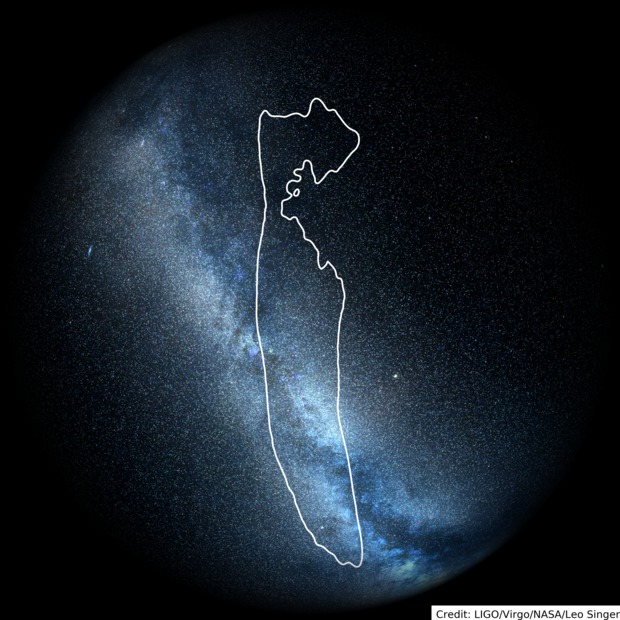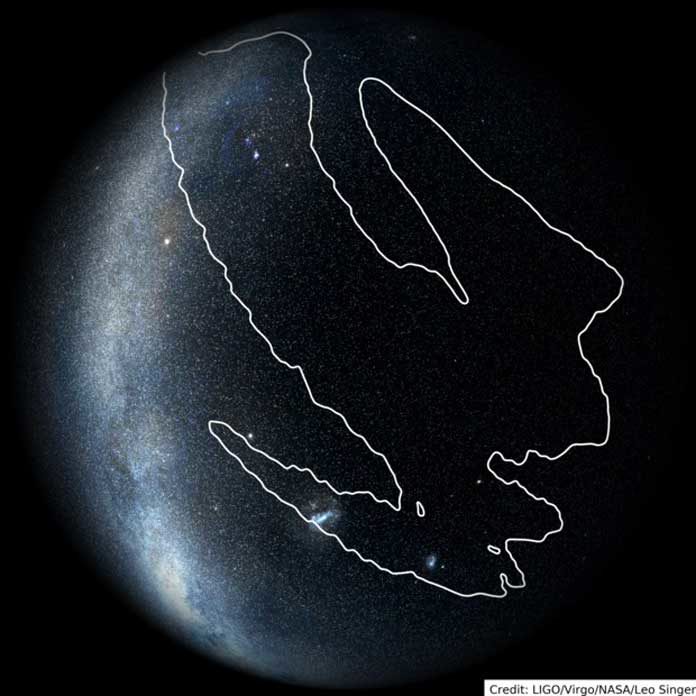The National Science Foundation’s Laser Interferometer Gravitational-Wave Observatory (LIGO) and the European-based Virgo detector recently detected the first ever observed merger between a black hole and a neutron star. These collisions of massive bodies involve large amounts of energy and actually warp spacetime, sending out gravitational waves which LIGO can detect. In the case of neutron star collisions, a burst of light is sent out as well as the gravitational waves.
Patrick Brady, spokesperson for the LIGO Scientific Collaboration and a professor of physics at the University of Wisconsin-Milwaukee said, “The universe is keeping us on our toes. We’re especially curious about the April 26 candidate. Unfortunately, the signal is rather weak. It’s like listening to somebody whisper a word in a busy café; it can be difficult to make out the word or even to be sure that the person whispered at all. It will take some time to reach a conclusion about this candidate.”
NSF Director France Córdova said, “Once again, we have witnessed the remarkable phenomenon of a neutron star merger, followed up closely by another possible merger of collapsed stars. With these new discoveries, we see the LIGO-Virgo collaborations realizing their potential of regularly producing discoveries that were once impossible. The data from these discoveries and others sure to follow will help the scientific community revolutionize our understanding of the invisible universe.”

However, it is quite difficult to figure out the precise location of this event in space and signals are very weak by the time they reach Earth. But the LIGO has support from the Virgo detector in Italy, which covers a large portion of the sky and helps to pinpoint source locations.
The April 25 neutron star smash-up, dubbed S190425z, is estimated to have occurred about 500 million light-years away from Earth. Only one of the twin LIGO facilities picked up its signal along with Virgo (LIGO Livingston witnessed the event but LIGO Hanford was offline). Because only two of the three detectors registered the signal, estimates of the location in the sky from which it originated were not precise, leaving astronomers to survey nearly one-quarter of the sky for the source.
The possible April 26 neutron star-black hole collision (referred to as S190426c) is estimated to have taken place roughly 1.2 billion light-years away. It was seen by all three LIGO-Virgo facilities, which helped better narrow its location to regions covering about 1,100 square degrees, or about 3 percent of the total sky.
David H. Reitze of Caltech, Executive Director of LIGO said, “The latest LIGO-Virgo observing run is proving to be the most exciting one so far. We’re already seeing hints of the first observation of a black hole swallowing a neutron star. If it holds up, this would be a trifecta for LIGO and Virgo—in three years, we’ll have observed every type of black hole and neutron star collision. But we’ve learned that claims of detections require a tremendous amount of painstaking work—checking and rechecking—so we’ll have to see where the data takes us.”
